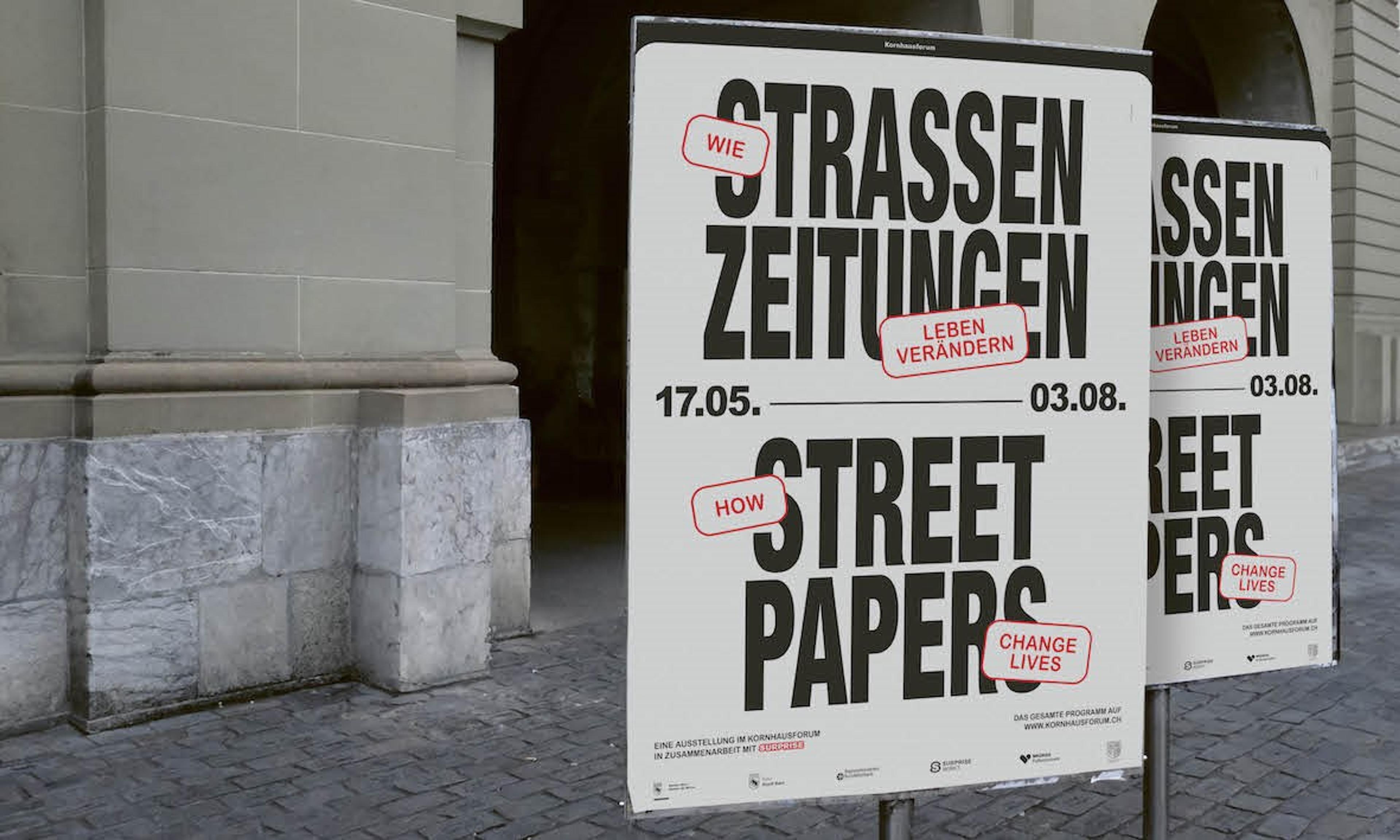How do you create an exhibition about street papers?

Kornhausforum
By Rebecka Domig
- Opinion

Curator Rebecka Domig from the Kornhausforum in Bern, Switzerland, shares her experience working on a subject that is barely understood in its entirety and yet is not marginalised.
If you close your eyes for a moment and think of an exhibition, you might think of pictures or other objects displayed in a room. The roots of modern museums and exhibition centres in Europe can be traced back to the 14th century, when wealthy aristocrats and clergymen began collecting their precious artefacts and rare finds in ‘cabinets of curiosities’. These cabinets were then displayed in prestigious rooms for visitors to admire. Corals, pearls, and crystals were stored alongside dried puffer fish, ivory carvings, leather-bound books, seafaring instruments, and bronze statues. Anything unknown and different was given special attention.
Today’s exhibitions demonstrate the legacy of these origins. Exhibitions on a topic indicate interest and appreciation; they convey that the topic is worthy of attention and engagement and that it possesses intrinsic value. This also applies to the topic of street papers – magazines and newspapers sold on the street by people facing barriers to other forms of employment.
Today, the International Network of Street Papers (INSP) brings together 92 street papers in 35 countries and 25 languages, as individuals all over the world fall through the gaps in the social networks that are supposed to protect us from poverty. However, the global success of the concept shows that the sale and purchase of a street magazine or newspaper involves far more than a simple exchange of goods. Street papers offer easily accessible support structures at a local level, as well as an international network. The exhibition “Wie Strassenzeitungen Leben verändern – How Street Papers change lives” showcases the worldwide success of the idea – and the reasons for its necessity.
It makes no sense to organise an exhibition about street papers without talking about the people who stand on the street every day and sell them. There are around 90,000 vendors worldwide, and the exhibition must also be about them. However, this is where the cultural practice of making exhibitions gets in the way. The concept of the exhibition still dictates that something is “exhibited” or “put on display”. In the exhibition space, every topic becomes a thing, and every life story becomes an object that visitors can scrutinise at will. Could you imagine becoming an exhibit yourself? Would you like to see your own life story in the museum? What to one person is recognition and appreciation of their life’s journey can be a painful experience of others, and the exhibition of people has a terrible history, especially in European countries.
Nevertheless, we have chosen to display portraits and stories of street vendors from all over the world. These are respectful insights into their lives that were created in trust-based situations and that meet journalistic standards. The stories provide an impressive insight into how social mechanisms contribute to people being pushed into poverty. In the accompanying programme, there will be further moments of direct encounters, but in a way that does not put anyone on display.
Who decides the narrative of an exhibition? Who decides which themes receive attention, which things are shown, and which narratives are given space? The answer to this question also echoes the beginnings of exhibition making. While it used to be the princes, cardinals and counts – all male – who put together their cabinets of curiosities according to their idea of the world order, today it is curators who organise exhibitions.
The exhibition is a child of colonialism. The selection, presentation, and design dictate a certain reading direction. For a long time, a Eurocentric view of the world was regarded as the norm. Recent years, however, have seen a recognition of the subjectivity of curatorial perspectives on the world and a push to declare them in an exhibition context. As a curator who has never been existentially affected by poverty, this has been important to me during this project. Over the last few months, I have been thinking about Peter Pan, who is looking for his own shadow. Where are my blind spots on this topic? What sort of prejudices do I hold? What am I not seeing? The Surprise team, especially Sara Winter Sayilir, stood by me like Tinkerbell and showed me where I had forgotten my shadow. It is also clear that street paper projects are themselves in the middle of a learning process in terms of decolonisation and diversification.
I believe that a thematic exhibition becomes more meaningful and intricate when multiple authors contribute to it. This is why participatory authoring is becoming more common in exhibition formats. Here, too, it is a matter of light and shadow. When an object is illuminated from different angles, a shadow disappears. “How Street Papers change lives” presents a series of highlights and perspectives, and each visitor brings their unique viewpoint on the topic. I expect that a polyphonic narrative will emerge, and that is why I would like to see something of a cabinet of curiosities. However, amazement should not be the end of the story; it should pave the way for a deeper understanding of our world and the role that street papers play in it.
“Wie Strassenzeitungen Leben verändern – How Street Papers change lives” is running from 17 May to 4 August at Kornhausforum, Kornhausplatz 18, Bern. Free entry.
Translated from German via Translators without Borders
Courtesy of Surprise / INSP.ngo


